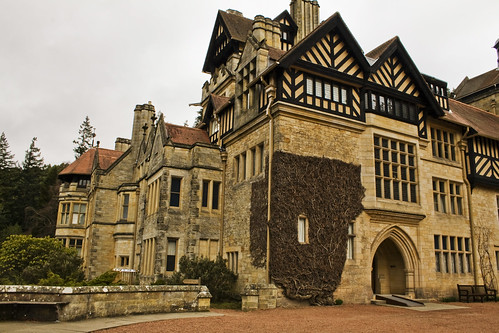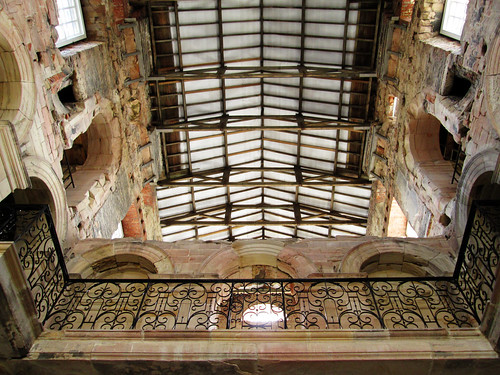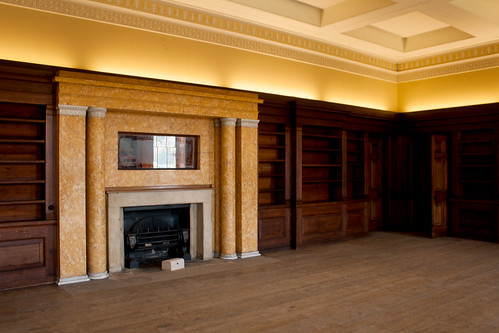Houses can be an absolutely central part of any story. Hell, they even form a sub-genre of their own through the haunted house story!
But are houses just the locations through which your characters move? Are they nothing more than sets? Or can you actually use houses as part of your character design?
Can houses contribute to the plot itself?
Let’s find out!
Go house hunting.
I’ve written about places and your hometown before when discussing using where you live to generate ideas. But today we’re going to look at houses.
After all, your house is probably where you spend the most time. And it’s also a good reflection on your character.
So try making a collage of the homes of three of your characters. They should all be very different, to reflect the differences between your characters. In fact, your characters should have made some kind of personal stamp on the place.
You could set up boards on Pinterest to do this, or do it the old-fashioned way with magazines, scissors and glue.
What do your houses say about your characters?
Are there any objects or belongings in the houses that might be important to the storyline? Remember the old axiom about Chekov’s Gun. Don’t hang a gun on the wall in Act 1 if it won’t be fired in Act 3.
Maybe there are loose floorboards in the parlour that hide a family secret. Is there a locked door hidden behind a tapestry? I’ve written about this kind of thing in my post about crafting perfect Gothic stories.
Think about the external appearance! Is it a mighty chateaux, a humble hovel, or an anonymous suburban terrace?

Freewrite around the homes of your characters. Start off by opening the front door, and describe what you see. Are there stairs? Is it empty? Full to bursting with possessions?
You might be wondering why you’d do this. Well if you want your character to be haphazard, and scatter-brained, and difficult to keep focused on a task, then you could tell the reader that’s what they’re like. Or you could describe a messy, cluttered house with half-finished projects in every room, and show the reader.
Take Seaton Delaval Hall, for example. Imagine your character lived here. Why would they put up with living in a ruin with floors missing, and fire damage on show?

How about having your protagonist write a letter introducing their home to a stranger who’s coming to stay? This becomes a way of finding your character’s voice, and it also lets you try writing in the first person.
Alternatively, write a description of the house for an estate agent’s website. Or write a listing for it for AirBNB.
What they don’t put in is probably more important than what they do.
What does the house think of your characters?
In stories like The Haunting of Hill House, the house itself becomes a character. In Rebecca, Manderley is far more than just a large house. Without the room in the attic, there could be no Jane Eyre.
So imagine that walls quite literally can talk. What would the houses themselves say about the characters inside them?

Freewrite a journal entry by your house. Maybe it’s describing a different perspective of a scene from your book. Perhaps the house hates your characters – let it explain why.
You might never use any of the house’s thoughts on the actions, but they will help you get a better sense of the character and their behaviour.
Visit houses yourself for inspiration.
If you’re in the UK, then you’re pretty much surrounded by houses you can visit through English Heritage or the National Trust.

Not only do the houses provide a wealth of information about their histories, they often contain stories about the inhabitants too. Glamis Castle is an absolute goldmine of legends and folktales, including locked rooms no one can find, ghostly serving boys, and Devilish games of cards on the Sabbath.
I even got a whole post out of the ghosts of Chillingham Castle.
How would your characters react to these houses? Would they enjoy visiting them, or would they be envious?
Can you spin a story out of a legend associated with one of these houses? Make notes on your visit, take lots of photos, and get freewriting when you’re back at home!
Whatever you choose to do, make sure you really get to know the houses of your characters. Whichever genre you write in, there will be something special, or dangerous, about the places your characters choose to live. As ever, the Devil is in the details and exposing objects, features and the history of your houses, you’ll bring your characters to life!
Over to you! Do you use houses in your fiction?
And if you’re looking for more blogs, podcasts and books to help you with your writing, grab my recommended reading list below!
Keen to improve your writing?
Grab your list of my top 5 blogs, books, and podcasts for fiction writers below!







I love the idea that the type of house lends depth and nuance to a character in a story. Also that the house itself (depending on the type of story) becomes a potent character in the process. I’ve heard people complain about “too much incidental detail” in stories, like clothing descriptions, environment descriptions, etc., which I don’t get at all, but to each his/her own. I guess that’s why I lean toward reading and writing detailed, more richly textured stuff even if it’s considered old fashioned or too filled with descriptive passages. Of course one has to avoid going overboard into purple prose territory too. Interesting blog post!
I LOVE all that description of clothes and settings and whathaveyou. It may seem a little ‘old fashioned’ but then I love the setting of stories almost as much as I love the stories themselves!
A characters HOME is often more telling than a hair style or the sound of their voice!
I think houses are important too, they can be a reflection of deeper meaning for sure. Or an underlying message/subtext/a warning. Great post, and great reflections. I will definitely keep my characters houses more in mind when Im editing now 😀